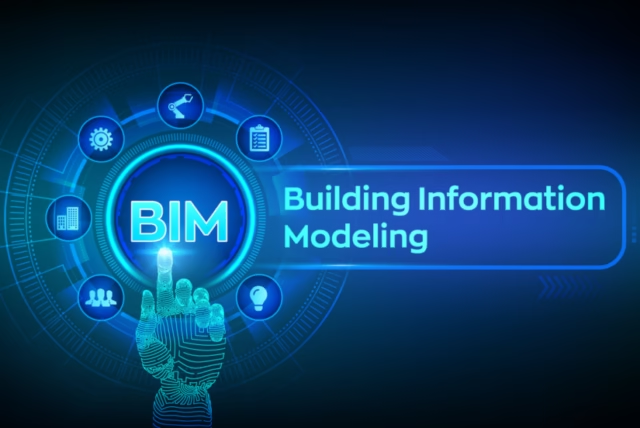Construction projects often face delays, mistakes and rising costs. Small errors can turn into big problems real quick. Unclear details cause teams to waste both time and budget. Miscommunication between architects, engineers and contractors makes things harder. Contractors need a sharper method to plan projects and boost efficiency. This is where BIM technology comes in. It makes a digital model that keeps every detail in one place. All teams access the same details and share updates with ease. This blog shows how BIM helps projects run smoother. It also explains why its benefits matter a lot in today’s construction industry.
Understanding BIM Technology
BIM stands for Building Information Modeling. It is a smart way to create and manage digital data for projects. With BIM, a precise 3D digital model forms, showing each detail of a structure. The model is not only visual.The model holds live details on materials, budgets, and project schedules. By working on a single model, teams stay clear and aligned. BIM supports every stage of a project. It helps with planning by showing clear layouts. It guides design with accurate details. It also supports execution by keeping updates in one place. With BIM, projects move with less risk and stronger control.
Why Streamlining Construction is Crucial
Construction is fast paced and very competitive. Smooth workflows decide who delivers projects on time and who falls behind. When order is missing, delays keep adding up. Poor coordination also pushes costs higher than the budget. Missed deadlines lower client trust and even future work. Quality suffers too when details are missed. Every mistake on site means lost time and wasted money. That is why teams need a better system. BIM technology solves these points. It connects people, data and design into one model. With BIM, projects gain speed, control and more reliable results.
Key Benefits of BIM Technology
Enhanced Collaboration and Communication
Construction projects have many teams. Architects, engineers and contractors often work with different sets of details. This creates confusion and slows progress. BIM fixes this by giving everyone one shared model. Each update shows right away, so no one works on old info. This clear channel cuts mistakes and speeds up decisions. Teamwork feels smooth, and projects move without endless back-and-forth talks.
Accurate Visualization and Planning
Paper drawings and 2D plans leave gaps. BIM gives 3D models that show the real shape of a project. Clients and teams see the structure before building starts. Clear views show design flaws early, not when walls are already up. Catching problems early helps save time and prevents expensive fixes. Better planning gives stronger confidence for everyone.
Cost and Time Efficiency
Budgets in construction often rise due to missed details. BIM improves estimates by showing exact material needs. This stops overspending and waste. It also keeps schedules in check with real data. Teams know what to focus on first and save time. Clash detection is another plus. BIM highlights conflicts like plumbing against electrical before work begins. Fixing them early avoids delays and extra costs later.
Risk Reduction and Quality Improvement
Hidden errors create serious risks. A misaligned beam or clash can hurt safety and budget. BIM spots these issues before construction begins. The model shows errors and gives fixes during design. This improves safety on site and lowers the chance of accidents. Quality also gets better since fewer problems reach the building stage. Clients get safer, stronger and more reliable results.
Sustainability and Resource Optimization
Green practices matter a lot today. BIM monitors energy flow and supports the creation of efficient, eco-friendly spaces. It also shows where waste may happen. Teams can choose smarter options, like less steel or recycled products. Resource data guides eco-friendly solutions without harming design quality. With BIM, builders cut waste and reduce the project footprint. Sustainability becomes part of the process, not a last step.
Practical Impact of BIM Technology
BIM helps projects avoid delays and big errors. Contractors use it to find clashes before work starts on site. Architects test designs and fix mistakes early. Owners see better cost control and faster delivery. Everyone works on the same model, so surprises reduce. Real projects prove BIM builds stronger teamwork. It saves time, manages budgets, and raises quality. For those new to the concept, here’s everything about Building Information Modeling
that shows how it makes construction smoother, safer, and more reliable.
Challenges in Adopting BIM
BIM brings big value, but hurdles remain. The first issue is the high cost and need for training. Many old school teams resist new tools and stick to habits. Without a clear plan, adoption fails. A good strategy and steady support are key. With the right steps, BIM adoption gets easier and pays off in the long run.
Future of BIM in Construction
BIM is moving into a smarter era. Cloud systems let teams share models from anywhere. AI predicts risks and improves planning. VR gives life-like project views before work starts. These tools make choices faster and safer. As tech grows, BIM will stay central to modern construction, pushing projects toward better speed, safety and higher quality.
Conclusion
BIM is now a powerful tool for construction. It makes work smoother, cuts mistakes, and supports better teamwork. Projects gain speed, safety, and stronger outcomes. The long-term value comes from better efficiency and smarter use of resources. It also drives green building practices that matter today. Choosing the right BIM Engineering & Consulting Company helps builders unlock these benefits. BIM is not optional anymore. It is a must-have for anyone who wants to succeed in a fast and changing world.







